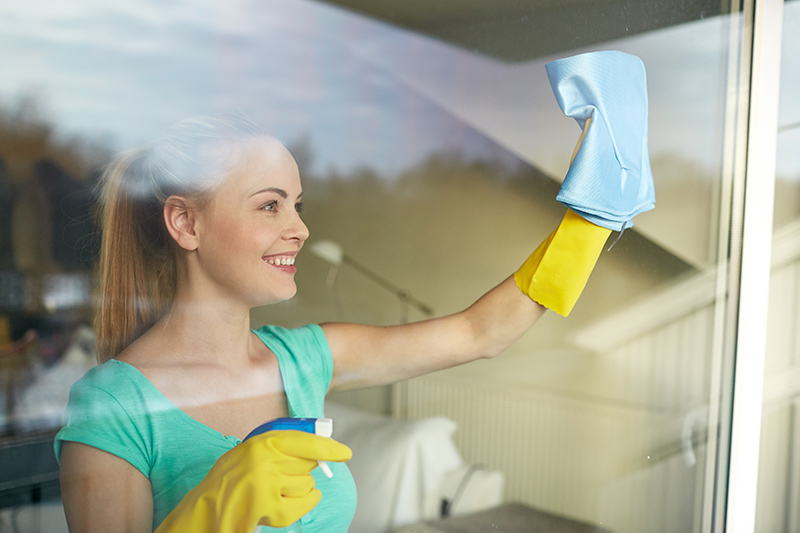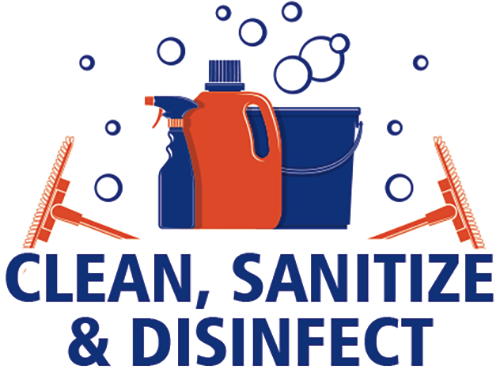What’s The Difference Between Cleaning, Sanitizing, And Disinfecting Surfaces?
Have you ever wondered why there are cleaning, sanitizing, and disinfecting products? Surely they all work the same, right? Wrong! Sometimes you have to tackle dirt and germs, and sometimes you have to go to battle with bacteria and viruses. The product you should use depends on the villain you are fighting.
Here is a brief summary of when and why to clean, sanitize, or disinfect.
CLEAN

Cleaning removes dirt and organic matter from hard surfaces using soap or detergents.
Hard Surfaces to Clean:
- Countertops
- Door Knobs
- Food Prep Surfaces
- Sinks
- Toilets & Urinals
- Waste Containers
- Windows
SANITIZE

Sanitizing reduces the number of micro-organisms on hard surfaces by 99.9%* to lower the risk of spreading infections.
Hard Surfaces to Sanitize:
- Countertops
- Dishes
- Food Prep Surfaces
- Silverware
- Tabletops
- Toys
DISINFECT

Disinfecting kills viruses, bacteria and fungi on hard surfaces by 99.999%*.
Hard Surfaces to Disinfect:
- Door Knobs
- Keyboards
- Healthcare Surfaces
- Railings
- Sinks
- Toilets & Urinals
- Waste Containers
*Each 9 after the decimal increases germ killing power by a factor of 1,000.
Certification Requirements
Sanitizers and disinfectants are regulated by the Environmental Protection Agency (EPA) and must be certified through a process that tests them to meet certain pre-defined criteria. By law, a chemical product cannot be labeled as a sanitizer or a disinfectant unless and until it is EPA certified.
Since disinfectants feature the broadest spectrum of activity, they go through more rigorous testing requirements and must clear a higher bar for effectiveness than sanitizers.

Consider Kill Time
Also called dwell time or contact time, kill time is the appropriate amount of time that a disinfectant has to remain visibly wet on the surface being cleaned to effectively kill the germs, viruses, or bacteria you're combating. Some chemical formulas kill in five minutes and others in one minute or less. Always check the product label and leave on surface for the length of kill time listed.
When products are not used according to the contact times listed on the label, there is a risk that microorganisms will not be completely killed on surfaces. As a result, surfaces can continue to pose a threat of infection.
Tips For Choosing Products
- Read product labels and only use them for their intended purpose. Never mix chemicals.
- Check kill claims, usage instructions, and safety precautions on labels before using products.
- Comply with EPA-approved label instructions on products, especially in foodservice establishments where risk of infection is higher.
When you need clean surfaces, it’s twine time.


